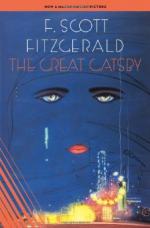|
This section contains 1,138 words (approx. 4 pages at 300 words per page) |

|
A Critical Anaalysis of the Great Gatsby
Summary: F. Scott Fitzgerald's "The Great Gatsby" explores profound, timeless themes. They include the discrepancy between Gatsby's dreams and his reality, his futile obsession with wealth to win the love of Daisy, and his quest for the American dream.
The Great Gatsby, by F. Scott Fitzgerald, is a modern American novel that explores multiple timeless themes. Critics Kermit W. Moyer and David F. Trask, analyze the most prominent motifs in the novel and their importance in relationship to Americans and the universal elements of society. Although there are several, the clearest themes are how illusion can mask reality, the grave effects of materiality, and the pursuit of the American Dream. Each critic also explores how these themes become interconnected throughout the novel as illustrated by Jay Gatsby.
Often, the line that divides illusion and reality becomes so vague that one cannot see where the first ends and the second begins. Or perhaps, it is just that he is unable to accept it. This becomes a primary motif in the novel as Jay Gatsby struggles with his desire to re-capture the past. According to Moyer, "[Gatsby's] vision of...
|
This section contains 1,138 words (approx. 4 pages at 300 words per page) |

|


